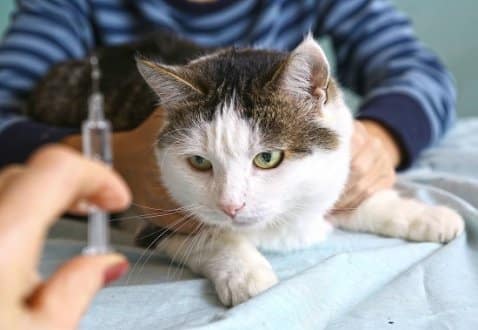Feline diabetes
Cost of cat insulin. Feline diabetes might sound scary but, with proper management, your cat can still live a long, healthy life. While caring for a cat with diabetes comes with significant emotional and financial responsibility, the extra effort is worth seeing your cat thrive.
With proper diet and lifestyle, coupled with insulin therapy, it is highly possible for feline diabetes to go into remission or be reversed. With early diagnosis and a low-carbohydrate, high-protein diet, between 20 and 90% of cats have been shown to go into remission.
What is the cost of treating diabetes in cats?
Like humans, cats need insulin to treat diabetes. Insulin helps regulate glucose levels to keep your cat healthy. However, the cost of insulin for cats is just the beginning when it comes to treating diabetes.
Depending on the brand and dose requirements, the cost of insulin can range anywhere from $30 to $150 per month. With the skyrocketing price of insulin—Lantus, one of the most popular brands, has jumped from $100 per bottle in 2012 to just under $300 in 2019 in the United States—this cost gets bigger every year.
Insulin isn’t the only thing you’ll be paying extra for if your cat has diabetes. The cost of treating diabetes in cats also includes the cost of syringes, which can range from $8 to $16 per month. Some cat owners may want to monitor their cat’s glucose levels at home, which requires the purchase of a $20 to $500 glucose monitoring machine. These machines require the purchase of lancets and test strips, which can cost from $5 to $15 per month. Alternatively, cats can get their glucose levels checked at the vet.
Whether pet owners choose to administer at-home or in-office glucose tests, cats with diabetes require more visits to the veterinarian than cats without. Insulin prescriptions must be renewed every three to four months, which could be an additional cost of $40 to $80 per month.
Additionally, proper diabetes management includes a healthy diet and stable routine. This means pet owners often spend extra money on higher quality food products. They may also pay for a cat sitter or cat boarding should they need to spend time away from home, as it is important to feed a cat with diabetes twice daily at the same time each day.
How to lower treatment costs for cats with diabetes
Luckily, there are ways to lower the costs of treating diabetes in cats. As the cost of insulin is the most significant, it is the easiest one to try to lower. There are two major ways that you can save on the cost of insulin for cats.
First, find a generic insulin. Generic insulin products contain the same active ingredient as the more expensive brand name products. This means they perform the same at a fraction of the cost. Switching from the brand name to the generic version can save as much as 30% on the cost of insulin for cats. For example, Humulin, a popular brand name of insulin retails for approximately $100 to $130, while its generic alternative, Novolin, retails for approximately $70 to $100.
Second, visit online pharmacies to find the best prices. Many cat owners get their insulin at their veterinarian’s office, which often charges anywhere from 100% to 160% of the wholesale cost of insulin. Additionally, many vet’s offices will charge a dispensing fee, which could range from $5 to $15. Buying insulin online can help you save a significant amount of money. If you live in the United States, it may also be beneficial to look at Canadian online pharmacies, as the cost of insulin is typically much lower in Canada.
Another way to save on insulin costs for cats with diabetes is to consider signing up for a pharmacy benefits plan. These plans typically require a small monthly or yearly fee and can save you up to 75% on your feline diabetes supplies.
While the cost of caring for a cat with diabetes is not insignificant, there are ways to save while ensuring your cat receives the care and attention it deserves.
Disclaimer: Please note that the contents of this community article are strictly for informational purposes and should not be considered as medical advice. This article, and other community articles, are not written or reviewed for medical validity by Canadian Insulin or its staff. All views and opinions expressed by the contributing authors are not endorsed by Canadian Insulin. Always consult a medical professional for medical advice, diagnosis, and treatment.


